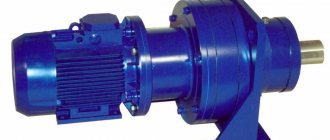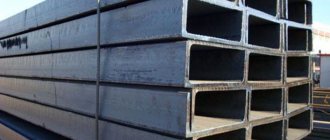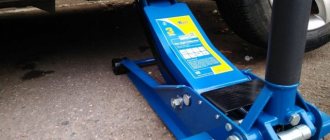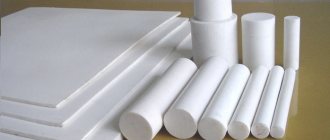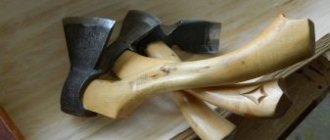The article talks about one of the most important materials in construction, masonry mesh. Its areas of application are varied, both for its intended purpose and for related purposes, but this does not make its role any less.
All the indicated factors indicate the importance of using masonry mesh for a durable building. Inexpensive, durable, profitable, fast and reliable!
Which masonry mesh is best to use for brickwork?
Brickwork is the most ancient, widespread and reliable method of building walls.
Thanks to new technologies, brickwork is becoming even more advanced and durable. Recently, masonry mesh has been successfully used to strengthen brick structures. Masonry mesh is widely used:
- during the construction of residential buildings and industrial facilities;
- to strengthen load-bearing structures;
- when creating partitions;
- during the construction of brick fences, pillars, etc.
Marking of masonry mesh
Currently, manufacturers offer a wide range of metal meshes, and therefore choosing the appropriate option is not an easy task.
Before purchasing masonry mesh, we recommend that you read the markings on the roll. Knowing what this or that parameter means, you can choose the best option for your case.
What indicators affect the quality of the mesh?
Firstly, this is the weight of the roll . This is the most important criterion. The more weight, the better the quality of the product. Compare this parameter on different rolls offered by the seller.
Secondly, look at the specified wire diameter . According to GOST, it must be more than 3 mm.
In addition, the label indicates the cell size, mesh (sheet) size, method of production of the product, etc.
For example, let’s look at what the marking “Welded mesh 50x50x3 (1.5x50)” means:
- welded - a method of manufacturing a product;
- 50x50 mm – cell size;
- 3 mm – wire thickness;
- 1.5 m – mesh width;
- 50 m – roll length.
If the wire is galvanized, the thickness of the zinc layer should be indicated on the label. Sometimes, with a very small layer (for example, only 10 g/m2), the mesh is passed off as an expensive and high-quality product. Thus, the seller is trying to mislead buyers.
Scope of application
Once you understand the markings, you can choose the appropriate mesh option for a specific application:
- For private construction, a wire mesh with a diameter of 3 mm is suitable;
- For the construction of residential buildings - 4 mm;
- For the construction of industrial facilities - 5 mm.
Masonry mesh up to 600 mm wide is intended for reinforcing walls, more than 600 mm – for reinforcing floors and other surfaces. Also, consider the size of the cells. The smaller it is, the stronger the mesh.
Summarize. High-quality masonry mesh is made from wire with a diameter of 3-5 mm. When choosing a mesh, take into account its technical characteristics and purpose (mesh size, presence of galvanization, etc.)
produces masonry mesh in strict accordance with its own specifications. We value our reputation and offer our customers only proven, high-quality products.
Buy products from reliable manufacturers, and then the structure you build will be strong and durable!
Varieties
Reinforcing mesh is often used to strengthen brick or aerated block masonry, for floor screed and other construction needs. Basalt fibers are the best option in terms of performance characteristics and price. And in some cases it is not practical to use other materials. For example, metal mesh is not suitable for reinforcing aerated concrete structures, as they will quickly become unusable from contact with the substances from which the blocks are made. Basalt sheets are also actively used during road works. All reinforcing mesh can be divided into several types.
Construction
It is used in the construction of various objects - industrial and private. Suitable for reinforcing load-bearing structures in multi-storey buildings that must withstand high loads. This mesh is used to strengthen brick buildings and houses made of concrete blocks. The big advantage is that the reinforcing material does not weigh down the structure, so there is no need to provide a more powerful foundation and additional supports in the project.
Road
Road, also known as basalt geogrid, is used for the construction or repair of roads for various purposes. Increases the service life of the coating, since it promotes uniform distribution of the load over the entire surface , which avoids subsidence of individual areas, the appearance of cracks and other defects.
Plastering
Used to strengthen wall surfaces. Suitable for interior and exterior work with plastering of walls. Ensures good adhesion of finishing materials, avoiding unevenness and cracks.
This mesh is also used to reinforce the insulating winding during pipeline laying.
Metal mesh for reinforcement and masonry
Prices for masonry mesh
- Mesh 50x50 Vr1 neozinc.
- Mesh 50x50 Vr1 galvanized.
- Mesh 50x100 Vr1
- Mesh 100x100x3
- Mesh 100x100x4
- Mesh 100x100x5
Types of mesh for masonry
Masonry mesh is used in the construction industry to reinforce brick walls and concrete products. In this case, the main task of strengthening the entire structure is solved. Masonry mesh is:
- steel
- basalt
- fiberglass
Metal masonry mesh
At APEX METAL you will buy metal masonry mesh. The main material for the manufacture of mesh is galvanized and non-galvanized wire BP1. The most common cell size is 50x50 mm, with a wire diameter of 3 to 5 mm:
| Cell size, mm | Theoretical weight of 1 m2, kg |
| Mesh 50x50x3 | 2,22 |
| Mesh 50x50x4 | 3,86 |
| Mesh 50x50x5 | 5,92 |
In addition, depending on the scope of application, mesh of other sizes is used - 50x100, 100x100 mm:
| Cell size, mm | Theoretical weight of 1 m2, kg |
| Mesh 50x100x3 | 1,66 |
| Mesh 50x100x4 | 2,96 |
| Mesh 100x100x3 | 1,13 |
| Mesh 100x100x4 | 2,00 |
| Mesh 100x100x5 | 3,10 |
The dimensions of welded masonry mesh are standardized and regulated by GOST 23279-85. You can find out the cost using the links above in the “Prices for masonry mesh” block or in the “Welded mesh” section of the Catalog.
How is reinforcement carried out?
The mesh is laid on every 4-5 rows of bricks. The mass of the wall acts on the reinforcing wire, causing it to clamp and work with the masonry as a single whole structure. The need for the masonry reinforcement procedure increases significantly if ventilation holes must be made between the facing brick and the wall.
Reinforcement with masonry mesh is divided into two types:
- longitudinal
- transverse
In the case of transverse reinforcement, the rods absorb transverse tensile loads associated with compression of the masonry. As a result, the mesh prevents the destruction of bricks subjected to tension or bending, thus increasing the load-bearing capacity of the wall.
Areas of application
Metal mesh for masonry from APEX METAL is used for the following purposes:
- plastering works
- fencing of scaffolding, building facades, construction areas
- arrangement of drainage of horizontal terraces, walls
- reinforcement of gypsum panels
- reinforcement of concrete, facades, floors, walls, arches
- reinforcement of reinforced concrete products, structures
- identification of underground communications
- pavement reinforcement
- mechanical protection of pipeline lining
- laying heating pipes when installing heated floors
Corrosion protection
The main method of corrosion protection is the hot-dip galvanizing method.
The mesh can also be supplied in non-galvanized form. But in this case, in order to provide anti-corrosion protection, the brickwork mesh is covered with a layer of mortar, which protects the steel from contact with the atmosphere.
Production technology
Masonry welded mesh is made by resistance spot welding from mutually perpendicular rows of rods with a diameter of 3 - 5 mm. For the production of such products, cold-drawn reinforcing wire of class BP-I is used from low-carbon steel grades with unlimited weldability and high ductility.
Also in the production process, reinforcing bars of classes A-1, A500C, B500C can be used.
Basalt composite
When choosing which masonry mesh is best for bricklaying, it is necessary to take into account its resistance to bending, tearing and tensile loads, as well as ductility and anti-corrosion resistance. These properties are a priority in basalt masonry mesh. They are made from polyester and epoxy structural materials. Basalt fiber is used as a base. Basalt meshes are characterized by the following properties:
- very low thermal conductivity coefficient;
- flexibility;
- dielectric characteristics;
- a light weight;
- wear resistance is higher than that of metal samples.
Basalt masonry mesh is suitable for laying brickwork on objects with complex architectural forms. They easily adapt to any geometric configuration, while allowing the formation of a thin layer of cement layer between the rows of bricks.
Brickwork mesh
Description
Brick mesh is used as a reinforcing element in the construction of brick buildings.
Masonry mesh is also widely used in construction and finishing works:
- for reinforcing prefabricated and monolithic reinforced concrete structures and products;
- for reinforcing brickwork;
- for reinforcement when pouring floors, ceilings, foundations;
- for plastering work.
In the production of mesh for brickwork, the contact welding method is used in accordance with GOST 23279-85 from VR-1 wire (GOST 6727-80).
Dimensions of masonry mesh.
For ease of use in brickwork, masonry mesh is produced in the following standard width (according to the options for using the mesh in brickwork):
- mesh 250 mm
- mesh 380 mm
- mesh 510 mm
- mesh 640 mm
- mesh 770 mm
- mesh 1000 mm
To make working with the mesh for brickwork and its transportation more convenient, it is made 2 or 3 m long.
Custom manufacturing according to drawings
The SK LenStroyDetal plant can also produce mesh for brickwork of any type and size depending on the thickness of the reinforced brick wall.
It is possible to produce masonry mesh with cells from 50 to 200 mm with a pitch of 50 mm.
The most convenient length of masonry mesh for transportation by rail containers is 2 m. This length guarantees maximum container loading.
Possible wire diameters: 4 and 5 mm.
The plant also produces galvanized masonry mesh made from wire with a diameter of 4 mm
- home
- News
- Production
- Economy
- Price list
- Where is welded reinforced mesh supplied? LenStroyDetal
- Articles Information on reinforcement
- Tips and tricks
CONSTRUCTION REINFORCEMENT MESH
- Welded mesh
- Brickwork mesh
- Mesh for concrete reinforcement
- Road mesh
- Masonry mesh
- Heavy reinforcement mesh
- Reinforcement frames
- Galvanized mesh
- Wire VR-1 (d=4 and 5 mm) in rods.
- All types of construction reinforcing mesh
Polls
Photo album
New on the site
- Wire VR-1 (d=4 and 5 mm) in rods.
- Invitation to the seminar: “Finished welded reinforcement products for monolithic reinforced concrete buildings - the path to increasing construction efficiency”
- June 12 is a holiday - RUSSIA Day!
- Video material: Reinforcement of vertical load-bearing structures of monolithic reinforced concrete buildings
- Bonava residential complex “Magnifika”
Popular
- Welded mesh
- Brickwork mesh
- Mesh for concrete reinforcement
- Road mesh
- Masonry mesh
- Heavy reinforcement mesh
- Reinforcement frames
- Galvanized mesh
- Wire VR-1 (d=4 and 5 mm) in rods.
- All types of construction reinforcing mesh
- home
- Types of metal mesh and production
- Prices
- Adviсe
- Map
- Contacts
Statistics
JSC SK Lenstroydetal © 2000-2021. Production and sale, construction reinforcing mesh
Dimensions
Products vary in rod thickness and cell shape. At the same time, the range of options on the market is quite wide, so when choosing the optimal size, it is worth considering the purpose of the mesh. The smaller the cell dimensions, the stronger the fabric. The most common sizes are 25x25 mm, 50x50 mm, but you can also find 150x150 mm or 5x5 mm. The thickness of one rod varies between 2-4 mm.
The mesh is produced in rolls, the thickness of the entire web is usually a multiple of the parameters of the building materials - brick or foam block. At the same time, the product is easily cut with ordinary scissors, so you can make strips of any size, if necessary.
Secrets of strengthening brick and block masonry walls with reinforcing mesh?
During the construction of any type of building or structure (including small elements such as stairs or columns), the strength factor is very important. Often quite large loads can affect the load-bearing masonry of brick walls, this leads to cracks and all kinds of destruction.
Reinforcement of brickwork
That is why structures should be strengthened with a reinforcing post or mesh. The purpose of this technology is to make a building or structure of any type stronger, especially half-brick masonry.
1 What are the types of reinforcement?
Reinforcement can be used for laying both horizontal and vertical elements, and is especially important for half-brick masonry. This depends on the direction of the direct load, which acts completely on the entire building structure. After the work is completed, a corresponding work certificate is drawn up.
Strengthening a brick wall with masonry mesh
One of the effective technologies that makes it possible to strengthen the structural elements of buildings is reinforcement. It is used not only when laying foundations, screeds, and constructing floors. Brickwork is also strengthened using reinforcement. For this use:
- Masonry mesh for bricks.
- Straight reinforcing bars.
- Zigzag rods.
Reinforcement prevents the formation of cracks under tensile and bending loads.
Types of brickwork reinforcement
Depending on the specific conditions, reinforcement can be:
- Transverse.
- Longitudinal
- Vertical.
Transverse reinforcement is carried out with pieces of reinforcement or masonry mesh for bricks. To avoid corrosion, it should be immersed in the solution a few millimeters on each side. A mesh made from large diameter rods weakens the masonry because it increases the thickness of the horizontal joint. Every second to fifth row of masonry is reinforced, depending on the results of strength calculations. When using larger size bricks, the mesh is laid more often.
Longitudinal reinforcement is used to strengthen partitions and load-bearing walls to increase their resistance to bending and lateral loads. The mesh is located along the masonry, reinforcing the longitudinal seams. The sheets are sewn together with transverse rods or welding. Vertical reinforcement is used in the construction of brick columns. If the dimensions of the column allow, it can be internal, and if not, external.
produces and sells masonry mesh for bricks of various sizes. It can be purchased at wholesale and retail prices. To do this, leave a request, and the manager will contact you to clarify the details of the order, terms and payment.
- home
- About company
- Catalog
- Online store
- Delivery
- Blog
- Contacts
- Vacancies
- Site Map
- Terms of use
© 2006-2021, Steel mesh. All rights reserved.
What is it and why is it needed?
The widespread use of basalt mesh is directly related to the popularity of materials such as foam blocks and aerated concrete. They can be used to build warm and durable buildings, they are easy to install due to their porous structure, and they are also attractively priced. However, when constructing an object from such blocks, it is necessary to perform intermediate reinforcement, so you cannot do without a masonry mesh. A building without additional reinforcement will be unreliable, even if the building is located in an area where no seismic activity has been observed. This is due to the characteristics of the materials and construction themselves.
After construction, any house or industrial facility shrinks - drying out, soil stabilization and other processes occur, and they act unevenly. Reinforcing mesh helps prevent voids, cracks in blocks and other defects that can lead to failure.
Some builders believe that modern materials have a sufficient margin of safety, so there is no need to strengthen structures. However, if you look at the regulatory documents - SNiPs, you can see that the project for the construction of buildings made of foam concrete or aerated concrete must include the use of reinforcing mesh.
There are different types of such products - metal, plastic and basalt. Previously, steel mesh was most often used in construction work. Modern technologies have made it possible to simplify the production of basalt reinforcement, so it began to rapidly gain popularity. This is not surprising, because a mesh made of such material has a number of advantages.
- Low thermal conductivity. Basalt reinforcement, unlike metal reinforcement, does not form cold bridges.
- Resistance to mechanical stress - stretching, bending, tearing. This is an important quality for a reinforcing material.
- Ease. The network does not weigh down the structure being erected; it can be quickly installed, conveniently stored and transported in rolls.
- Resistant to alkalis and other components used in the manufacture of concrete blocks.
- Ability to withstand temperature fluctuations.
Basalt mesh is also more durable than metal mesh, since it does not corrode, and its cost is more favorable thanks to modern technologies that make it possible to produce this material on an industrial scale.

